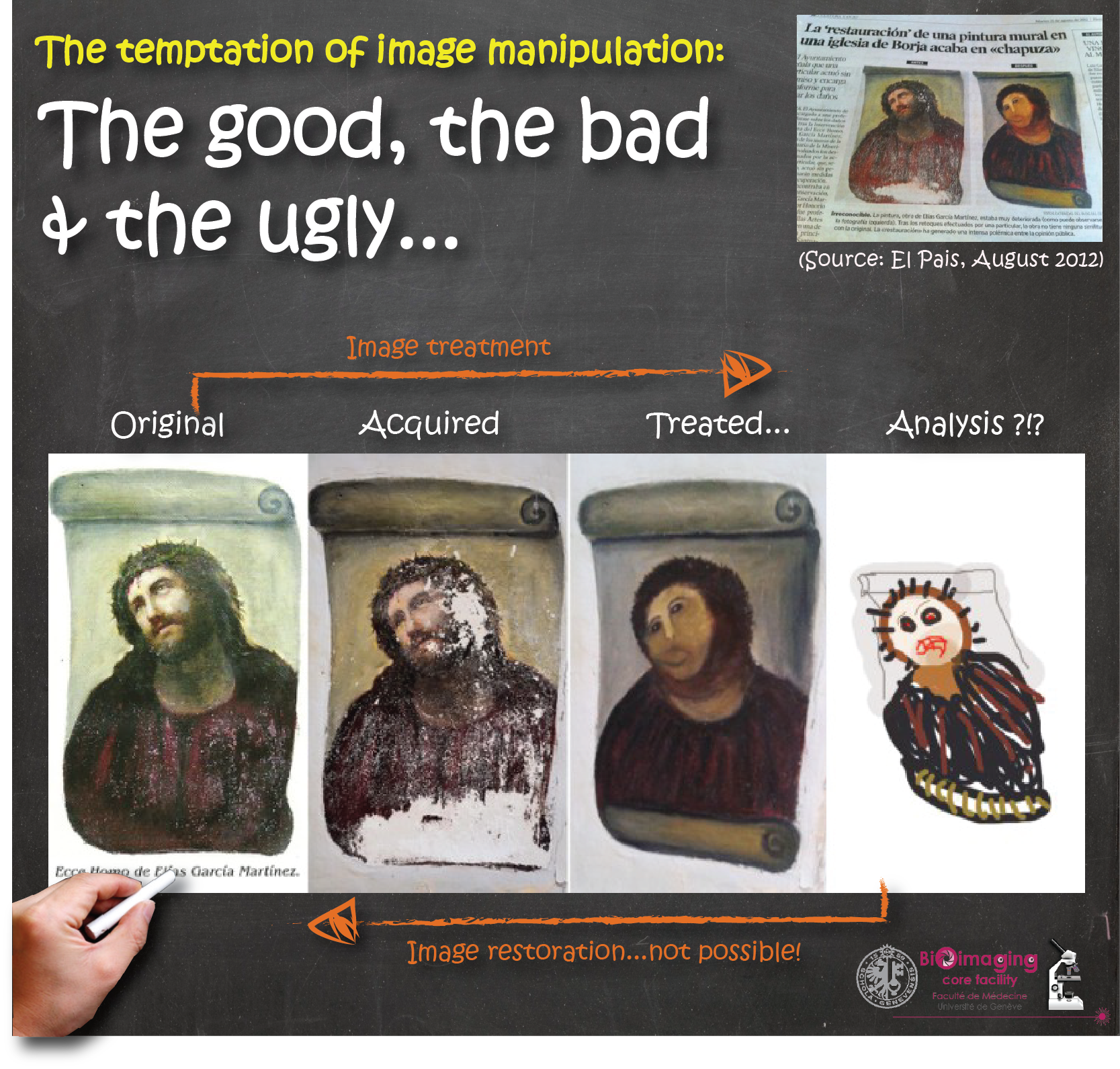Digital Image Ethics
For more information, please consult this very well documented webpage published by our colleagues at the University of Arizona:
http://microscopy.arizona.edu/learn/digital-image-ethics
Article to download HERE.
An another excellent article: "CSI:cell Biology" from Helen Pearson.
In this article, the guidelines are the following:
- Scientific digital images and data that can be compromised by inappropriate manipulations;
- Manipulation of digital images should only be performed on a copy of the unprocessed image date file (always keep the original data file safe and unchanged!);
- Simple adjustments to the entire image are usually acceptable;
- Cropping an image isually acceptable;
- Digital images that will be compared to one another should be acquired under identical conditions, and any post-acquisition should also be identical;
- Manipulations that are specific to one area of an image and are not performed on other areas are questionable:
- Use of software filters to improve image quality is usually not recommend for biological samples;
- Cloning or copying objects into a digital image, from other parts of the same image or from a different image is very questionable;
- Intensity measurements should be performed on uniformly processed image data, and the data should be calibrated to a known standard;
- Avoid the use of lossy compression;
- Magnification and resolution are important;
- Be careful when changing the size (in pixels) of a digital image.

